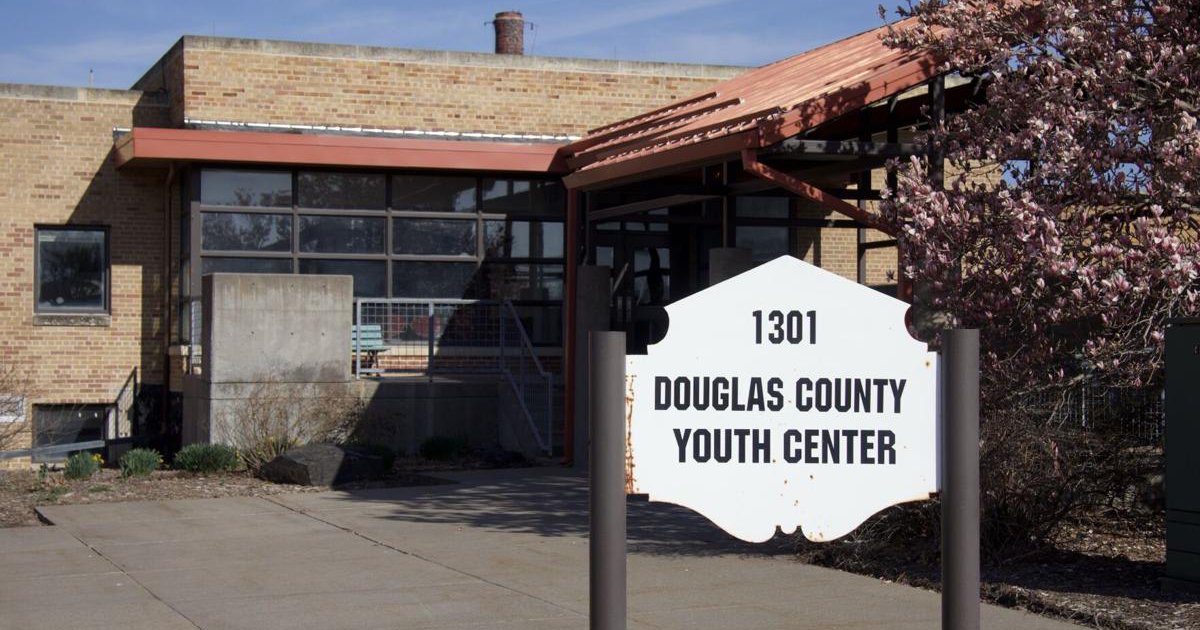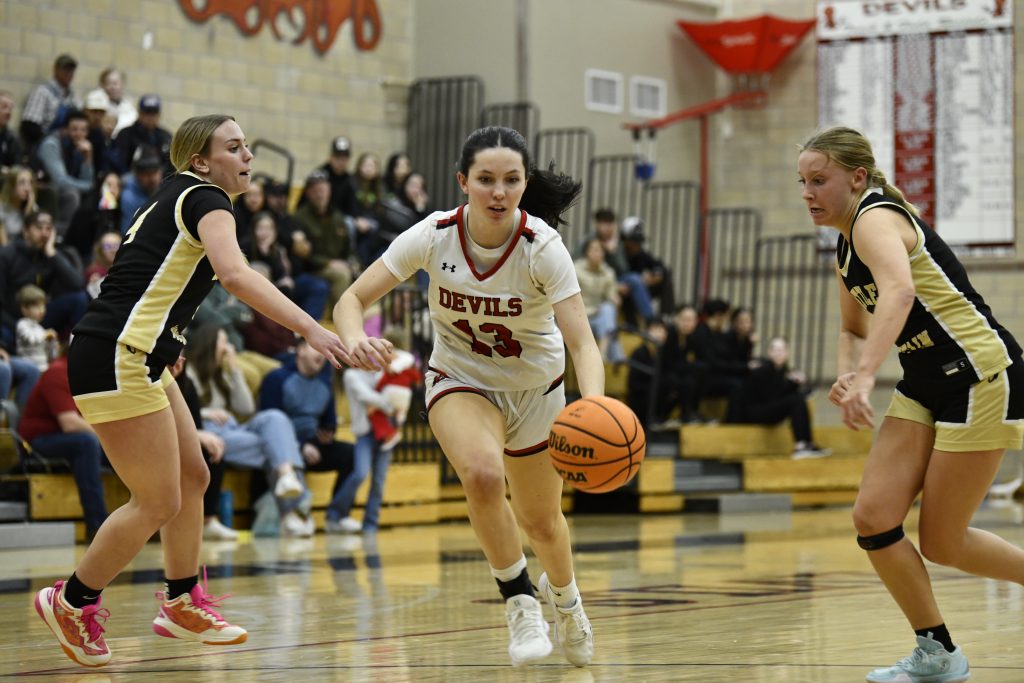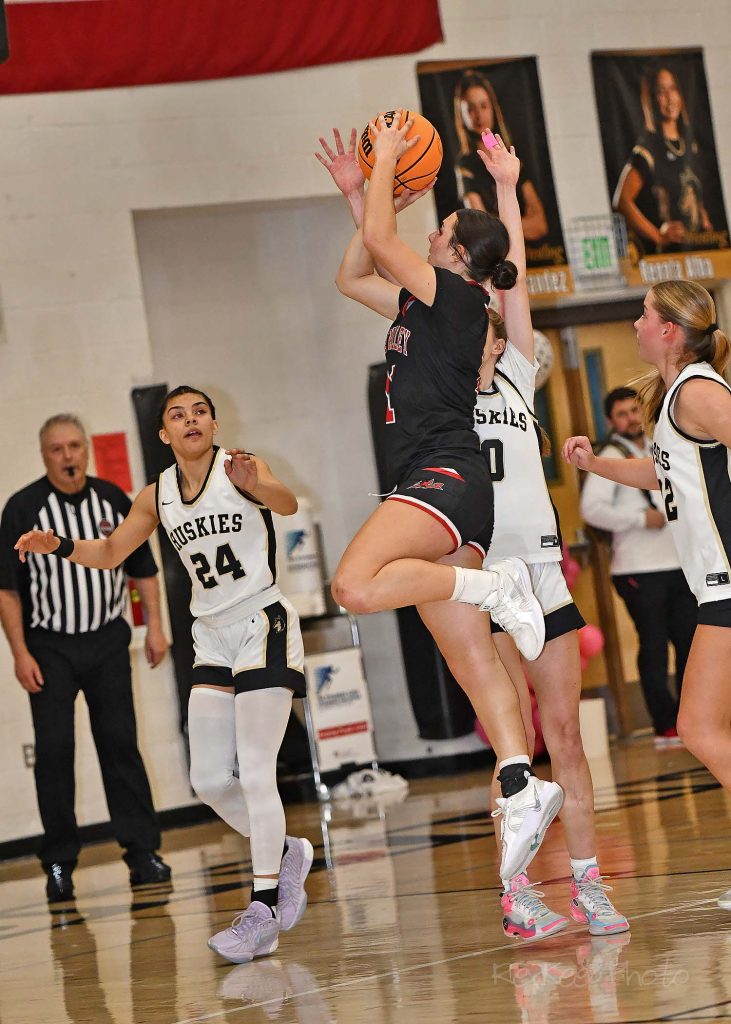Evva Starr has heard thousands of pitches from student journalists over the years as the faculty adviser to Common Sense, Thomas S. Wootton High School’s newspaper.
“I get excited whenever there’s something new,” Starr, the Rockville school’s English department resource teacher, says with a laugh. She remembers how her ears perked up last school year when Nathan Zweig, a junior in her newspaper class, proposed an article about Fliff, an app that bills itself as a free play-for-fun sportsbook. Underage use of sports betting apps in the halls of local high schools is widespread, students and school faculty say. Recent legalization, word-of-mouth, promotions on social media, and ease of access have contributed.
“That was the first time I’d ever heard of Fliff. I thought, ‘Cool. Great. Something different,’ ” recalls Starr, 52, of Potomac. “Then Nathan explained Fliff to me. Now that I understand it, I think it’s terrible.”
Fliff is one of many sports betting apps and is considered among the most popular for underage betting. This app uses virtual currency and follows a sweepstakes model, which means no purchase is needed to play. That distinction separates Fliff from more traditional online gambling sites. Signing up is easy on the colorful, flashy app. Tiny print says players must be 18, but no age verification is required. In other states, the minimum age may be older. Players can quickly earn badges and loyalty rewards, and climb leaderboards betting on an array of daily sporting events across the country and around the globe from college football to professional tennis, English Premier League soccer, NBA games and mixed martial arts.
Unlike underage drinking or substance misuse, online gambling can be almost invisible without the telltale red flags, such as garbage cans filled with beer bottles and hard seltzer cans or the acrid smell of marijuana.
“Fliff is all around me. Every day, kids at lunch are on their phones, talking about what bets are going to hit,” says Zweig, 17, of Potomac. “I have friends who don’t follow sports, but they still bet. They say it’s not real gambling, but eventually some kids will go to apps like BetMGM or DraftKings. It’s hooking people.”
Some Wootton students, however, including senior Justin Heller, 17, of Rockville, disagree.
“Well, people see it different ways. I think it’s helpful because it shows you in the end that everyone ends up losing money. It gives you free money to learn with, play with,” Heller says. “It’s taught me something definitely—to be smart with my own money and not bet it away.”
Starr green-lighted Zweig’s pitch, and soon after he published an opinion column highlighting the many risks and few rewards of underage sports betting.
In 2022, about one in seven Montgomery County high school students had gambled on something in the previous 12 months, according to the Maryland Department of Health’s Youth Risk Behavior Survey, conducted every other year. The actual numbers may be higher now, based on comments from more than 25 students, educators and parents interviewed by Bethesda Magazine.
“Most parents have no idea how widespread it is,” says Joe Cassidy, head baseball coach at Walt Whitman High School in Bethesda since 2003. “Parents think their kids are just sports crazy or athletes or psyched about a game. But are they really excited about the Braves playing the Pirates when they can’t name a single player on either team?”
Gambling is prohibited in Montgomery County Public Schools (MCPS). It is banned at school-sponsored events and on school property. MCPS did not respond to multiple requests for comments for this story.
“There don’t seem to be any real protections to prevent children from using the platform. Self-reporting age is a nonfactor,” says Starr, an MCPS teacher for 25 years. “My perspective is this could be onboarding them to a lifetime of addictive behaviors, not just gambling.”
In simple terms, according to the National Institutes of Health, addiction sets in when a substance, such as alcohol, “ … hijack[s] the pleasure/reward circuits in your brain and hook[s] you into wanting more and more.”
As with substance-use disorders, people with gambling disorder may also exhibit withdrawal, depression and anxiety, according to the Mayo Clinic and the Cleveland Clinic. The Cleveland Clinic reports that “gambling at a young age is … a risk factor for developing gambling disorder” later in life.
“There is a lot of crossover with video games. The easy access and fast pace keep triggering the brain. Kids don’t think about video games and loot boxes as gambling, but they are by definition,” says Heather Eshleman, prevention manager at The Maryland Center of Excellence on Problem Gambling within the University of Maryland School of Medicine in Baltimore. “I’ve seen a definite increase in the number of high schools reaching out to us since sports betting was legalized.”
Boys are far more likely than girls to engage in sports betting, says Stanley Tamale, a licensed professional counselor who practices in Montgomery County. Many of Tamale’s clients are young adult males between the ages of 19 and 24 who started gambling when they were in high school.
“Online sports betting is like a fishing rod. People have figured out the psychology of how to reach teens. Teens, especially boys, are risk-takers. They seek peer approval and acceptance,” says Tamale, 46. “But their brains are not fully developed until they are 25. The 16-, 17-, 18-year-old brain is so vulnerable.”
Tamale and other counselors encourage their clients to resist peer pressure and to be savvy consumers, skeptical of any free stuff, such as virtual currencies. “I tell my clients to think of those pop-ups as scam calls. Don’t be duped. You’re smarter than that. Don’t fall for the advertising. If it’s too good to be true, then it is.”
However, a confluence of factors—including illegal offshore betting sites, payment apps and slick mobile betting platforms—make that a lot easier said than done for adolescents eager to get some fast cash.
“Social media is a big factor in it: who will win, by how many points, how many total bases? Every day, TikTok videos promote the best parlays,” Zweig says. “If you get lucky and combine a bunch of games, then you can win. I have a friend who bet a dollar and picked seven games for a parlay [on Fliff]. He won 130 bucks.”
A parlay links together bets on a sequence of athletic events across teams and athletes, potentially earning a much larger payout than an individual wager. Picture this: the Ravens win, then the Commanders win by a touchdown and, finally, Nikola Jokić scores 25 points for a Nuggets victory.
Some students believe apps such as Fliff could offer valuable lessons to teenagers who gamble.
“I think for some people it’s teaching kids to gamble. Like any other video game, you can spend a lot of time on it. It depends on the person for sure,” says Vikram Mishra, 17, of Rockville, who’s also a senior at Wootton. “It’s not necessarily a bad thing, but you have to make sure you have control over yourself when you’re using it.”
Coach Cassidy, 54, of Clarksburg, chats regularly with his players about the downfalls of gambling.
“I tell my players their system won’t work. I say they may give you a free dollar, but it’s Monopoly money. They’ve got your real money. Now, with AI and all these algorithms, they run millions of simulations. The odds against you are even higher,” he says with a sigh. “ ‘Guys,’ I tell them, ‘It’s stacked against you. You’re going to lose.’ ”
Sports betting exploded after the U.S. Supreme Courtallowed states to legalize it in 2018. Last year, according to the American Gaming Association, sports gambling raked in $13.71 billion in revenue, an increase of more than 25% over 2023. It marked the fourth consecutive year of eye-popping growth. The association estimates $3 billion was wagered on March Madness games alone.
Maryland legalized sports betting in 2021. Players must be 21, have a Social Security number, and be physically present in the state when betting online. The apps track the user’s location in real time.
In D.C., players only need to be 18 to bet on Daily Fantasy Sports sites such as PrizePicks and Underdog. These sites allow individuals to use real money to place bets on specific athletes, not teams, and how they will perform in a game. These platforms offer set payouts and promotions in dollars. Given the lower age requirement, they are especially popular with young men in high school. But unlike Fliff, these sites deal in dollars, not virtual currencies.
“It’s an unfair playing field, especially for boys,” says state Sen. Bryan Simonaire (R-Dist. 31) of Anne Arundel County. “Most people can gamble responsibly, but you might be part of the small percentage who get addicted. We just don’t know who they are. I want to target them and help them.”
For Simonaire, it’s personal. His father, he says, became addicted to gambling after casinos were built near his house in Arizona. He lost $1 million, says Simonaire. “The casino was 10 minutes away. He got into the habit of going. It became an addiction as opposed to entertainment,” he says. “Now we have internet gambling with instantaneous access and nonstop advertising. The ads draw kids into it.”
In 2020, Simonaire introduced a bill related to schools teaching about the risks of gambling, but it stalled during the pandemic. Earlier this year, Simonaire worked with a coalition of individuals and organizations, including The Maryland Center of Excellence on Problem Gambling, to introduce a bill in the Maryland General Assembly to revise the state’s Youth Suicide Prevention School Program and make students aware of the link between gambling and suicide. It passed unanimously.
Simonaire says it’s up to local school districts to determine how to implement the bill. He hopes students will see gambling included in the list of risk factors, along with substances such as alcohol, opioids and marijuana, by the spring. “We have a responsibility to fund education, and we’re doing it a lot through gambling,” he says. “We also have a responsibility to help students not get addicted to gambling.”
Fifteen percent of the state’s gambling revenue goes toward the Blueprint for Maryland’s Future, which promises to increase the education budget by $3.8 billion annually for 10 years, starting in 2021. Between July 2024 and January 2025, nearly $59 million from sports betting was directed to public education.
“I am not an alarmist,” says Steve Goodman, 50, a professor in Georgetown University’s Sports Industry Management graduate program and a sports industry veteran. “For parents, I think the first step is to be aware it’s out there. Then, understand the potential mental health piece and the money piece. Are kids betting money they don’t have?”
Goodman, who lives in Bethesda and has two sons who graduated from Whitman, adds, “Sports betting is so fast and so easily done. It’s easy to hide. Even if parents do check phones, kids can bury their apps.”
The Maryland Center of Excellence on Problem Gambling highlights two main characteristics of problem gambling. The first is the inability to control the amount of time or money spent on betting. The second is the resulting negative consequences, including emotional, financial, personal and legal problems.
“To parents, I would say, ‘Keep an eye on your teens.’ There is often a difference between someone spending more time on their phone versus hiding their phone,” Tamale says. “People hide their behavior when they have a problem. It will be the same with teens and gambling. They will hide it, and parents might not find out until a young man is in trouble financially.”
Talking is often a first step toward treating potential gambling problems.
“Teenagers are good at hiding stuff, but they’re also good at telling you stuff, if you pay attention,” Cassidy says. “Online betting is the same as a drug. It’s the rush of winning, chasing the loss, chasing the high. I equate this to smoking in the ’60s. They sort of knew it was bad, but they kept that to themselves. I don’t know how you put this genie back in the bottle. It’s just going to get worse.”
Meg Drennan is a freelance journalist who has written for Education Week, The Chronicle of Higher Education and NPR. She focuses on health and wellness stories and has a Master of Public Health degree from Johns Hopkins. She lives in Bethesda with her family.
The Maryland Center of Excellence on Problem Gambling offers an online self-evaluation tool to help individuals determine if they have an issue. The center also offers resources for counseling and peer groups, and a help line. The Montgomery County Department of Health and Human Services does not have any programs designed specifically to address gambling disorder.
If you or someone you know needs help with gambling, call 800-GAMBLER (800-426-2537) or visit 1800gamblerchat.org for free, confidential support 24/7.
This appears in the November/December 2025 issue of Bethesda Magazine.































































